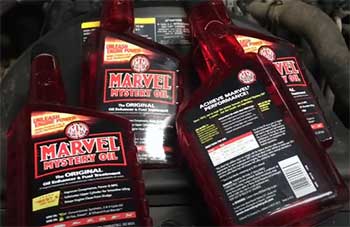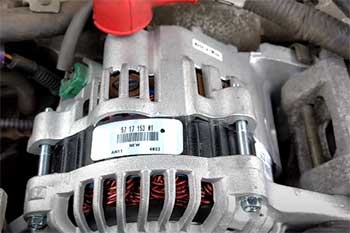I’m not one to overhype products, but let me tell you, if you’re in the market for a reliable, long-lasting battery, the Full Throttle AGM battery from Fullriver is a game-changer.
Whether you’re powering your RV for a cross-country adventure, keeping your boat running smoothly, or ensuring your car audio system thumps at car shows, this battery delivers.
I’ve tested it, lived with it, and I’m convinced it’s worth every penny. Stick with me as I share my experience, break down the pros and cons, compare it to other brands, and give you tips to keep it performing like a champ.
My Journey With The Full Throttle Battery
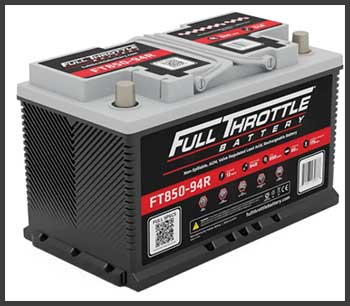
Picture this: I’m at a car show, my Celica decked out with a killer sound system, lights flashing, and a crowd gathering.
The last thing I need is a battery that can’t keep up.
I used to run a yellow-top battery, one of those big-name brands everyone swears by, but it started fading on me after just a couple of seasons.
That’s when I stumbled across Full Throttle AGM batteries from Fullriver.
A buddy recommended them, raving about their power and durability, so I decided to give one a shot. I swapped in a Full Throttle FT850-31, a Group 31 battery with 850 cold cranking amps (CCA) and 115 amp-hours (Ah), and let me tell you, it was a revelation.
From the moment I installed it, I noticed the difference. My sound system hit harder, the lights stayed brighter for longer, and I didn’t have to worry about the battery dying mid-show. I’ve taken it off-road in my Jeep, used it to power camping gear on weekend trips, and even relied on it for a small solar setup at a remote cabin.
This thing just keeps going. Over the past two years, it’s handled deep discharges, rough vibrations, and extreme temperatures without flinching. I’ve pushed it hard—sometimes draining it more than I should—and it always bounces back.
The Full Throttle’s ability to recover from low charge levels is honestly impressive, and it’s become my go-to for any high-demand application. It’s not just a battery; it’s a partner that doesn’t quit on you.
Why Full Throttle Batteries Shine: The Pros
- Unmatched Durability and Build Quality
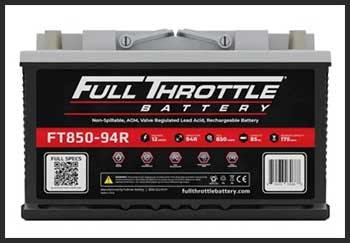
You want a battery that can take a beating, and Full Throttle delivers.
These batteries use Thin Plate Pure Lead (TPPL) technology with 99.994% pure virgin lead, which is a fancy way of saying they’re built tougher than most.
The plates are thicker, and the Over-The-Partition welds make them resistant to vibration and shock. I’ve driven my Jeep through rocky trails, and the battery didn’t budge.
The ABS plastic case (with optional metal jackets) adds another layer of protection, especially in harsh environments like off-roading or marine settings.
Fullriver claims these batteries can handle the toughest conditions, and from my experience, they’re not exaggerating.
- Long Lifespan That Saves You Money
Let’s talk longevity. Full Throttle batteries are designed to last up to 1,250 cycles at 50% Depth of Discharge (DoD), which means you can drain half the battery’s capacity and recharge it over a thousand times.
In real-world terms, I’ve had mine for two years, and it’s still performing like it’s brand new. Compare that to a standard flooded battery that might give you 500-700 cycles if you’re lucky.
Fullriver’s high-purity lead and high-compression cells reduce internal resistance and plate corrosion, which translates to fewer replacements and lower costs over time. Sure, the upfront price is higher, but you’re saving money in the long run.
- Maintenance-Free Convenience
I’m not a fan of babysitting my gear, and with Full Throttle, I don’t have to. These are sealed AGM batteries, meaning no topping off with distilled water or cleaning corroded terminals. You install it, and it just works.
I’ve had zero issues with electrolyte leaks or off-gassing, which is a huge relief compared to the flooded batteries I used to deal with. The “set it and forget it” design is perfect for folks like me who want reliable power without the hassle.
Whether you’re using it for your RV, boat, or solar system, this feature saves time and stress.
- Fast Charging for Quick Turnarounds
Time is money, right? Full Throttle batteries charge faster than most thanks to their low internal resistance, which allows charge rates up to 35% of total Ah. In my case, I’ve hooked it up to a good charger and had it back to full in under eight hours after a deep discharge.
This is a lifesaver when you’re prepping for a trip or need to get back on the water fast. Compared to traditional batteries that can take forever to recharge, this speed keeps you moving without long downtimes.
- Flexible Installation Options
One thing I love is how versatile these batteries are. You can mount them vertically or horizontally, which is a big deal if you’re working with tight spaces. I installed mine sideways in my Jeep’s dual battery setup, and it fit like a glove where a flooded battery would’ve been a nightmare.
The recombinant technology means no off-gassing, so you can safely install it inside your vehicle or cabin without worrying about dangerous fumes. This flexibility makes Full Throttle a solid pick for everything from cars to boats to off-grid setups.
- Impressive Warranty for Peace of Mind
Full Throttle batteries come with up to a 4-year full replacement warranty on automotive group sizes. That’s a bold statement from Fullriver, and it gave me confidence when I bought mine. Knowing I could get a replacement if anything went wrong took the risk out of the purchase.
I haven’t needed to use the warranty yet, but it’s nice to know it’s there, especially for applications like overlanding or marine use where you’re far from a service center.
The Not-So-Good Parts of Full Throttle Batteries
- Higher Upfront Cost
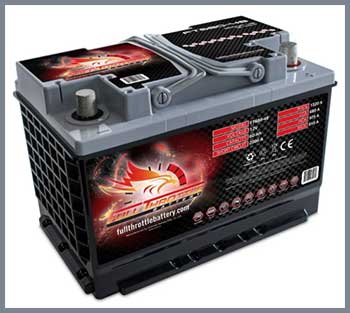
Let’s be real—Full Throttle batteries aren’t cheap.
Compared to brands like EverStart or even mid-tier options like Interstate, you’re paying a premium upfront.
My FT850-31 set me back about $300, while a comparable flooded battery might cost $100-$150. For budget-conscious folks, that price tag can sting.
But here’s the thing: the longer lifespan and lower maintenance costs balance it out over time.
If you’re only looking at the initial hit to your wallet, it might feel like a splurge, but I’ve found the investment worth it for the performance.
- Not Ideal for Pure Deep-Cycle Applications
While Full Throttle batteries are great for mixed-use scenarios—like starting your engine and powering accessories—they’re not the best for pure deep-cycle applications like mobility scooters or golf carts. I learned this when I tried using mine for a friend’s electric golf cart.
It worked, but it didn’t last as long per cycle as a dedicated deep-cycle battery like Fullriver’s DC Series. If your primary need is deep cycling, you might want to look at those instead. For hybrid uses, though, Full Throttle is still a rock star.
- Potential for Terminal Corrosion in Rare Cases
I’ve been lucky, but I’ve heard from a couple of folks on forums about corrosion around the negative post, especially in dual battery setups like my Jeep. One user reported a “white fungus-like bloom” around the terminal, which sounds like a nightmare.
Fullriver’s brass terminals are designed to resist corrosion, but in rare cases, it can happen if the setup isn’t sealed properly or if there’s an issue with the battery itself. The company’s warranty team is responsive, but it’s something to keep an eye on, especially in humid or salty environments.
- Weight Can Be a Drawback
Full Throttle batteries aren’t exactly lightweight. My FT850-31 weighs around 70 pounds, which is hefty compared to lithium batteries or even some flooded options. If you’re trying to keep weight down—like in a performance car or a lightweight RV setup—this could be a downside.
I didn’t mind the extra weight for my Jeep, but if you’re hauling multiple batteries or working with a smaller vehicle, it’s something to consider. The trade-off is the durability and capacity you get, but it’s not ideal for everyone.
Maintenance Tips To Keep Your Full Throttle Battery Thriving
- Use a Voltage-Regulated Charger
To get the most out of your Full Throttle battery, you need a proper charger. I use a voltage-regulated charger, and it’s made a huge difference. Fullriver recommends charging at a minimum of 8 hours to reach full capacity, and I’ve found that sticking to this ensures the battery stays healthy.
Avoid cheap trickle chargers that can over- or under-charge, as they can shorten the battery’s lifespan. I picked up a smart charger for about $50, and it’s been worth every penny for keeping my battery in top shape.
- Avoid Deep Discharges Whenever Possible
I’ve been guilty of draining my battery too low during long camping trips, but I’ve learned my lesson. Full Throttle batteries can handle deep discharges better than most, but repeatedly draining them below 50% DoD will wear them out faster.
Try to recharge before you hit that point. I now keep a portable solar panel handy for topping off during extended trips, and it’s helped extend the battery’s life. If you’re using it for cyclic applications, aim for moderate discharges to maximize those 1,250 cycles.
- Keep Terminals Clean and Secure
Even though Full Throttle batteries are maintenance-free, you should still check the terminals occasionally. I make it a habit to inspect mine every few months, especially after off-roading. Use a wire brush to clean any dirt or minor corrosion, and ensure the connections are tight to prevent power loss.
I had a loose terminal once that caused a slight voltage drop, but a quick tighten fixed it. A little preventive care goes a long way in avoiding issues like that rare corrosion problem I mentioned.
- Store in a Stable Environment
Heat is the enemy of any lead-acid battery, including AGM. Fullriver says every 12°C (22°F) above 25°C (77°F) can cut battery life in half. I store my spare battery in a cool, dry garage when not in use, and I’ve noticed it holds a charge better than when I left it in a hot shed one summer.
If you’re in a hot climate, try to keep your battery in a shaded or ventilated area. Cold weather is less of an issue—AGM batteries like Full Throttle perform well in the cold—but avoiding extreme heat is key.
- Regularly Cycle the Battery
If you’re not using your battery regularly, like in a vacation cabin setup, give it a charge cycle every few months. I learned this the hard way when I left a battery sitting for six months without charging, and it lost some capacity.
A trickle charger or a quick run through a charge-discharge cycle keeps the plates active and prevents sulfation. For my solar setup, I make sure to run the battery through a full cycle every quarter, and it’s stayed reliable.
How Full Throttle Stacks Up Against The Competition?
I’ve put my Full Throttle FT850-31 through its paces, but how does it stack up against other big names like Odyssey, Deka, and Optima? Let’s break it down, comparing power, durability, cost, and more to help you decide which battery fits your needs.
- Full Throttle Vs. Odyssey Battery
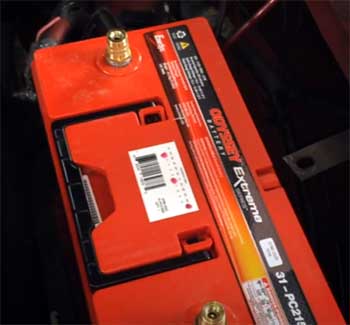
Odyssey Extreme batteries, like the PC2150T with 950 CCA and 130 Ah, are beasts for high-demand applications.
I’ve used one in a friend’s RV, and it’s a powerhouse, especially for starting heavy engines.
Full Throttle’s FT850-31 (850 CCA, 115 Ah) is slightly less potent but holds its own with a 200-minute reserve capacity compared to Odyssey’s 205 minutes.
Where Full Throttle shines is its 4-year full replacement warranty versus Odyssey’s 3-4 years (depending on the model).
Odyssey costs more—around $350-$400 versus my Full Throttle’s $300—and while it’s great for extreme conditions, Full Throttle’s faster charge rate (35% of Ah) and flexible mounting options make it more practical for my mixed-use needs like car audio and off-roading.
If you need raw power, Odyssey edges out, but Full Throttle’s balance of cost and versatility wins for me.
- Full Throttle Vs. Deka Battery
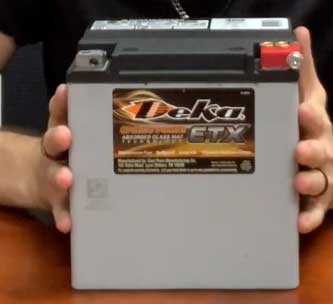
Deka’s Intimidator AGM series, like the 9A31 with 800 CCA and 105 Ah, is a solid mid-range contender.
I’ve seen these in marine setups, and they’re reliable for the price—around $250.
Full Throttle’s FT850-31 outperforms it with higher CCA and Ah, plus a longer 1,250-cycle life at 50% DoD compared to Deka’s estimated 1,000 cycles.
Deka’s warranty is typically 2-3 years, shorter than Full Throttle’s 4-year guarantee.
I also found Full Throttle’s vibration resistance superior, crucial for my Jeep’s rough trails.
Deka’s a good budget option, but Full Throttle’s durability and longer lifespan make it the better long-term investment for demanding applications like mine.
- Full Throttle Vs. Optima Battery
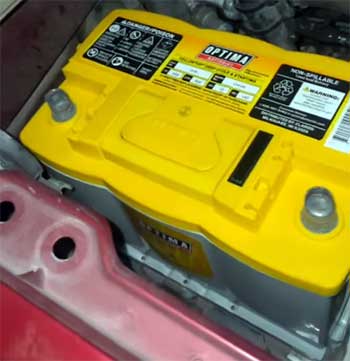
Optima YellowTop (D34/78, 750 CCA, 120-minute reserve) is a favorite for car audio buffs like me, and I ran one before switching to Full Throttle.
Its spiral-wound design is lightweight at 60 pounds versus Full Throttle’s 70 pounds, but Full Throttle’s 850 CCA and 200-minute reserve capacity give me more staying power at shows.
Optima’s 3-year warranty is solid, but Full Throttle’s 4-year full replacement is better.
Price-wise, they’re close—both around $300—but Full Throttle’s recovery from deep discharges and horizontal mounting flexibility suit my Jeep and solar setups better.
Optima’s great for lighter vehicles, but Full Throttle’s robustness wins for rugged use.
Frequently Asked Questions (FAQ)
Full Throttle batteries are manufactured by Fullriver Battery, a company based in China with engineering teams in the USA, Europe, and China. They’ve been in the game since 1995, focusing on premium AGM and GEL batteries for automotive, marine, RV, and industrial applications. Fullriver controls the entire manufacturing process, from grid casting to final assembly, which ensures consistent quality.
Absolutely. Fullriver’s Full Throttle batteries are some of the best AGM batteries I’ve used. They’re built with high-purity lead, robust plates, and advanced technology that delivers excellent performance, durability, and recovery from deep discharges. Users on forums like Airstream and Reddit praise their reliability for RV and car audio applications, and my own experience backs that up. They’re a solid investment for demanding uses.
Fullriver projects their Full Throttle AGM batteries to last about 1,250 cycles at 50% Depth of Discharge, which translates to 5-7 years with proper care. My FT850-31 is two years in and still performs like new. Lifespan depends on usage, charging habits, and environment—avoid extreme heat and deep discharges to maximize it. Fullriver’s 10-year design life is ambitious but achievable with good maintenance.
AGM batteries, like Full Throttle, have a higher upfront cost compared to flooded batteries, which can be a barrier for some. They’re also heavier than lithium batteries, which might matter for weight-sensitive applications. In rare cases, terminal corrosion can occur, especially in humid environments. Lastly, they’re not the best for pure deep-cycle applications like golf carts—dedicated deep-cycle batteries like Fullriver’s DC Series are better for those.
Why Full Throttle Is Worth Your Money?
After two years of pushing my Full Throttle battery to its limits, I can say it’s one of the best investments I’ve made for my vehicles and off-grid adventures. It’s tough, reliable, and hassle-free, with power that keeps up with my demanding lifestyle.
Whether you’re an overlander, boater, or car audio junkie, this battery won’t let you down. Trust me, you’ll thank yourself for choosing Full Throttle—it’s the battery that just keeps delivering.
